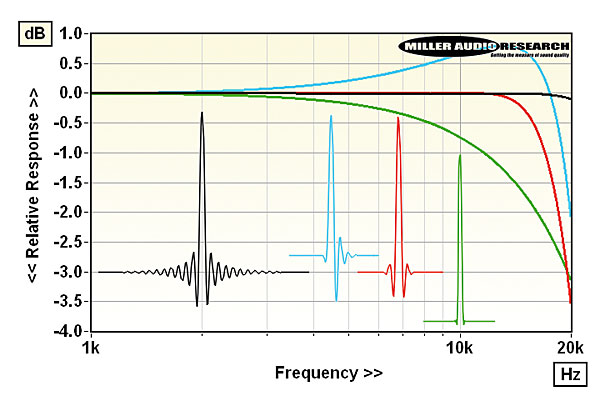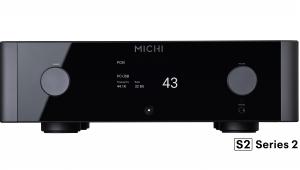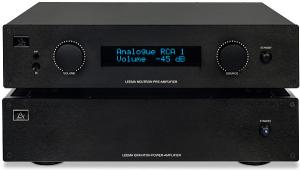T+A DAC 200/A 200 DAC/Preamp & Power Amp Consonant Coefficients
T+A's own synchronous upsampling algorithms are further refined in the DAC 200 with FIR Long, FIR Short, Bezier/ IIR, Bezier and two NOS (non-oversampling) modes. FIR Long and Short are traditional linear-phase types while the other pair are minimum-phase filters based on Bezier polynomials. 'FIR Long' [black, inset Graph with 1kHz-20kHz scale] betrays obvious pre/post ringing but has low phase distortion and excellent rejection of aliasing images (>100dB with 48kHz media). 'FIR Short' [red] has much reduced pre/post-ringing but also has a very limited 7.5dB rejection of out-of-band images and a steep treble roll-off of –3.6dB/20kHz. The mixed 'Bezier/IIR' interpolation filter [blue] behaves like a slow/minimum phase filter with no better suppression of stopband images than FIR Short, slightly increased phase distortion and a +0.8dB/13kHz treble peak. The NOS filters [green] offer almost perfect time domain behaviour – no ringing – but a rolled-off treble of –3.5dB/20kHz with CD and 48kHz media.

Specifically, with 48kHz, 96kHz and 192kHz LPCM inputs, the DAC 200's frequency response(s) up to 20kHz, 45kHz and 90kHz, respectively, are –0.1dB, –1.0dB and –3.8dB (FIR Long); –3.6dB, –2.5dB and –3.8dB (FIR Short); –2.2dB, –30dB and –7.5dB (Bezier/IIR); –4.4dB, –5.1dB and –7.5dB (Bezier); –3.5dB, –3.5dB and –5.7dB (NOS 1); and –3.2dB, –3.5dB and –5.7dB (NOS 2). PM

























































